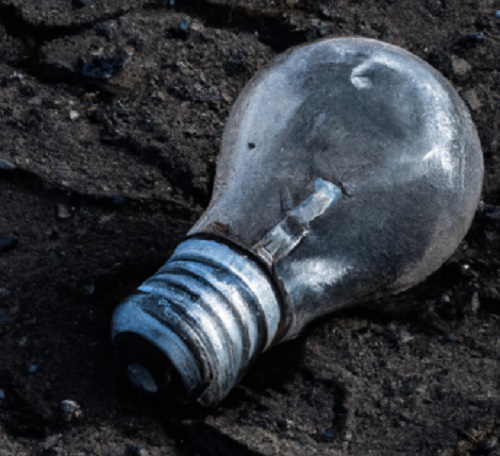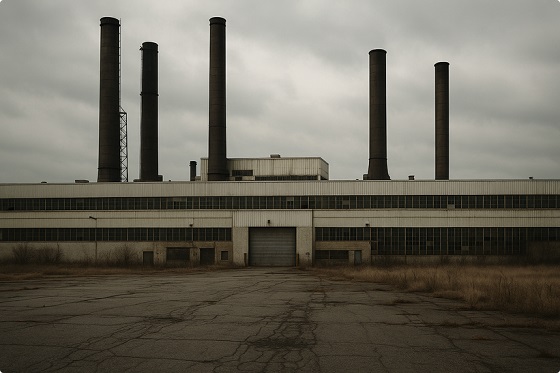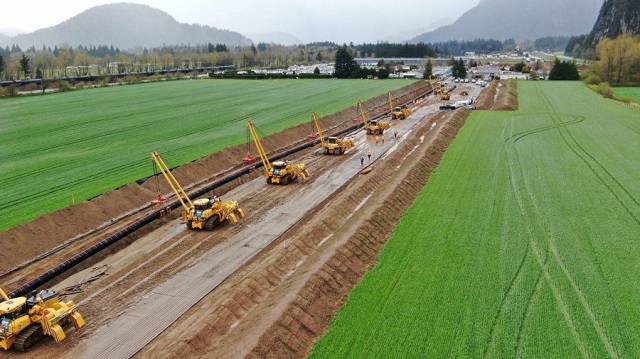Energy
Achtung: Learning from Germany’s energy shambles: Terry Etam

From the Frontier Center for Public Policy
By Terry Etam
No one interviews mechanics about the challenge of an energy transition. In fact, the voices of the many that maintain the system get accused of disinformation for pointing out mechanical realities like “That isn’t gonna work.”
In 1880, a great author, Mark Twain, whom you may never hear spoken of again because he had the audacity to write in the vernacular of the day, wrote an extremely funny essay called The Awful German Language. “Surely there is not another language that is so slipshod and systemless, and so slippery and elusive to the grasp…There are ten parts of speech, and they are all troublesome…Now let the candidate for the asylum try to memorize those variations, and see how soon he will be elected…In German, a young lady has no sex, while a turnip has…a tree is male, its buds are female, its leaves are neuter; horses are sexless, dogs are male, cats are female-tomcats included, of course; a person’s mouth, neck, bosom, elbows, fingers, nails, feet, and body are of the male sex, and his head is male or neuter according to the word selected to signify it…My philological studies have satisfied me that a gifted person ought to learn English (barring spelling and pronouncing) in thirty hours, French in thirty days, and German in thirty years.”
I have no idea if his synopsis is sound, but I do know it is funny as hell and it comes leaping to mind upon any contemplation at all of Germany’s current energy mess. I can’t think of a better turn of phrase than to describe it as slipshod and systemless and slippery and elusive to the grasp.
The lunacy began more than a decade ago, but it took a few years before serious consequences started to appear. They are here now, in full force. Primary among them was the decision to shut down all nuclear power in the country with no suitable base load replacement other than… coal, the last imaginable energy source one could imagine Germany purposely pursuing after a decade of their energy transition shouting. In what had to have been a staggeringly embarrassing moment, the German government even went as far as destroying a village to expand a coal mine. In 2023, not 1923.
To be fair, Germany’s energy demise was hastened by the Russian war and subsequent loss of Russian gas (and to be even more fair, I recognize that as a Canadian I have absolutely no moral high ground to ridicule anyone else’s government). As The Economist put it: “By weaponising the natural gas on which Germany’s mighty industrial base relies, the Russian president is weakening the world’s fourth-biggest economy and its third-biggest exporter of goods.”
But that was an accelerant, and not the match. For more than a decade, Germany has been not just turning away from fossil fuels faster than possible, it has fed mightily into the global narrative that fossil fuels were last century’s news. The overarching anti-hydrocarbon stance, that to maintain a cent in any fossil fuel investment was to risk good money on soon-to-be ‘stranded assets’, has been allowed to take over the public discourse as a fact, with no opposition from even the likes of those now in a very bad spot for allowing these concepts to take root as modern energy givens.
The German war on hydrocarbons is all the more peculiar because of the way in which the country has wrapped almost its entire industrial strategy around them. A physicist named Shaun Maguire outlined it well on Twitter, and thank heavens for people with weird fascinations. (@shaunmmaguire: “I’ve been obsessed with the chemicals industry since I was a kid.”)
Mr Maguire wrote an illuminating thread on Germany’s economy and its relationship to both energy and chemicals (an epic quote right off the top: “Germany’s decision to shut down their nuclear facilities was one of the stupidest political decisions in history. Most of their economy is based on turning energy into chemicals.”).
A profile of Ludwigshafen points out some startling facts. First, the place is enormous. BASF, the massive chemical company, has a ten square kilometre facility in the city with its own transit system.
Ludwigshafen consumes about as much natural gas as Switzerland. The output from Ludwigshafen, per BASF’s website, supports: Agriculture, Automotive/Transportation, Chemicals, Construction, Electronics/Electric, Energy & Resources, Furniture & Wood, Home Care and Industrial/Institutional Cleaning Solutions, Nutrition, Packaging & Print, Paints & Coatings, Personal Care/Hygiene, Pharmaceuticals, Plastics & Rubber, Pulp & Paper, and, finally, Textiles, Leather & Footware. The website has pull-down menus for each category that outline a dizzying array of pretty much everything you’ve ever laid your hands on that wasn’t breathing, photosynthesizing, or dug out of the ground.
Those huge natural gas pipelines flowing into Germany are the very lifeblood of German industry, as much or more so than anywhere else. In many places, without natural gas people would simply freeze. In Germany, they would freeze in many square miles of abandoned petrochemical factories. Sure, it would be steampunk-cool way to go, but other than that there would be nothing aesthetic about it.
Last year, I stood slack-jawed in wonder at news that Germany had constructed an LNG import terminal in 5 months flat (an LNG-Importeinrichtung – feminine). How on earth… it takes a year to get a permit for anything in the western world. How could they build her so fast?
Now I know. They had to. The bedrock of Germany’s mighty industrial base depended on it.
There are no grounds for entertaining the thought that Germany is incapable of designing, building, and operating an optimal energy system. It is crazy to think otherwise; Germany is collectively a formidable engineering talent.
Yet it is equally crazy to shut down a bunch of nuclear reactors with no suitable backup base load power (and remember, the nuclear plants were put on the boat to Valhalla before Russian antics).
Some of Germany’s current energy plans are equally as crazy, such as being short of power and simultaneously activating a mass conversion to electrical heat pumps. Whatever you do in an electrical grid, the one thing you don’t want to do is increase demand peaks. An overarching goal should be to reduce them, because the highest possible load, the point of maximum demand, sets the capacity need for the entire system. If on the coldest, highest demand day of the year, a system needs 1,000 units, it needs to be built and maintained to provide 1,000 units, even if the average demand is only half that.
Germany’s heat pump rollout plan is a scheme that will do exactly the wrong thing. It will significantly increase demand at the exact worst time. It is like taking the example above and resetting the peak to 1,200 units, even if the average remains at 500. The entire system now needs to be able to provide 1,200 on demand.
What happens if it doesn’t? Well, what do you think happens if there is a power failure during the coldest snap of the year, when wind and solar output are low, or if reliance on wind/solar is too great and they can’t perform? It will be catastrophic.
So you might be driven to madness trying to unravel this knot, because on the face of it Germans can’t both be engineering-competent and simultaneously run their energy system into the ground.
The answer to this impossible scenario, how such a contradiction can exist in reality, is due to two things: the politicization of the energy system, and the failure of that energy system to explain and defend itself.
Politics, as we know, is where logic goes to die. Popularity means power; and you can gain popularity in general by keeping citizens happy (hard to do, always something to complain about), or by terrifying them. It should not be a surprise that out of that swamp (one rude Trump-derived nomenclature that I can’t disagree with) comes a plethora of committees and committee decisions made by people for whom reality will always be steamrolled by the quest for popularity (there are exceptions that prove this rule, showing up about three times per century somewhere on the globe).
Thus we get governments fighting to eliminate hydrocarbons for political reasons; because they want to be seen as ‘being on the right side’, and because one side has been so much better at it (more on that in a second), being ‘an environmentalist’ is now colloquially equivalent with being anti-hydrocarbon.
Stuck in the middle of the fear mongering are the plumbers, the farmers, the mechanics, the drivers, the people that actually keep the wheels turning, the ones with their feet grounded in reality and not in armchair-industrialism. Included in that camp are the ones that check the valves and drill the wells that keep the world’s fuel flowing. Others can argue about what it will look like in 40 years, but for the hands-on people, the story is all about today.
But those voices get lost in the noise storm. No one interviews mechanics about the challenge of an energy transition. In fact, the voices of the many that maintain the system get accused of disinformation for pointing out mechanical realities like “That isn’t gonna work.” Capable, knowledgeable people that point out the rising risks of an unreliable electrical grid are shouted down as ‘fossil fuel shills’ or agents of misinformation.
Sadly then, we are forced to live with these pile-driving spasms of bad decisions as part of a political process, democracy, that most would never abandon. And hey, it’s not easy for participants either – Imagine the chaos between the ears of German Chancellor Olaf Scholz, coming to Canada seeking more LNG, then sitting at a press conference listening to Justin Trudeau say there is no business case to be made for LNG to Germany, and being unable to speak against such gibberish because Climate, knowing full well he would go to another country to get an assured supply (and he did, Qatar).
One can’t help but summon sympathy for Mr. Twain’s German-themed bewilderment when hearing what has happened thus far in 2024. Germany recently approved $44 billion in new expenditures to build brand new gas-fired power plants (pacifying their supporters by declaring that the plants must be able to burn hydrogen and are ‘expected to’ do so by 2040 – not hard to spot the weasel words, is it). Note that new natural gas power plants can not be blamed on Russia, because this is just more consumption and not a replacement for supply. To rub salt in the Energiewende-wound, Bloomberg via Yahoo chimes in with the headline, “Germany’s Budget Chaos Leaves Green-Energy Projects in Limbo.” Seems that they found $44 billion for natural gas easily enough though. What was that transition stuff about, again?
Such mystifying behviour is at least partially explained by the second reason that energy system contradictions can exist – the dumbfounding size of the energy education deficit, and for that the hydrocarbon industry can at least partly look in the mirror, because the energy system has not done enough to explain and defend itself.
Consider Alex Epstein for example, a one-man energy-education army that has amassed a huge following. He’s written great books, and even appeared before congress, largely because he has taken the time and effort to point out the colossal benefits that hydrocarbons have brought humanity. Humanity as we know it wouldn’t exist without the hydrocarbon system, nor would most (or all) of the technological innovations we enjoy. Mr. Epstein spells this out, of his own accord, to far greater effect than the entire industry has in the past 30 years.
Many of those energy points are not hard to make, such as this foundational one that even Big Oil CEOs seem unable to articulate: “If one wishes to ascribe certain negative characteristics to hydrocarbon usage, it is only rational to consider the benefits that are derived from same.” And yet the opponents of hydrocarbons have done such a resoundingly thorough and effective job of amplifying any negativity that that simple statement is heard almost nowhere, except by Alex and a handful of others. Those earning massive pay stubs should be leading the charge, and they just aren’t. Not effectively anyway.
A general recognition of the boundless value of current fuels is coming; the question is, now much pain until that becomes commonly understood. The reality is that hydrocarbon usage continues to grow and set record consumption levels, including coal, and will for a long time. The evidence is pretty stark and clear, even for the likes of the IEA that predicts an imminent demise in hydrocarbon demand over and over and over, then keeps re-upping demand estimates as they happen.
A great number of innovative ideas are making their way to market that will start making inroads on how we deal with energy and industry. But until proven at scale, the existing system needs to be protected from frightened mobs, and someone needs to explain reality to them.
We all know what’s going to happen; an energy transition will happen over the next century at a realistic pace as new technology/nuclear/whatever becomes dominant. The challenge is: How much damage will be done before our elected representatives start choosing optimization, as opposed to whatever it is they’re doing now?
Terry Etam is a columnist with the BOE Report, a leading energy industry newsletter based in Calgary. He is the author of The End of Fossil Fuel Insanity. You can watch his Policy on the Frontier session from May 5, 2022 here.
Business
Carney budget doubles down on Trudeau-era policies

From the Fraser Institute
By Kenneth P. Green and Elmira Aliakbari
The Carney government tabled its first budget, which includes major new spending initiatives to promote a so-called “green economy,” and maintains greenhouse gas (GHG)-emission extinction as a central operating principle of Canadian governance.
The budget leaves untouched most of the legislative dampers on Canada’s fossil fuel sector (oil, gas, coal) of the last 10 years, while pouring still more money into theoretically “green” projects such as additional (and speculative new types) of nuclear power, electrical transmission to service “green” energy production, continued tax credits for alternative fuels such as hydrogen, and more. Adding insult to injury, the budget discusses “enhancing” (read: likely increasing) the carbon tax on industrial emitters across Canada, and tightening controls over provinces to ensure they meet new federal tax targets.
Over the past decade, Ottawa introduced numerous regulations to restrict oil and gas development and again accelerate the growth of the green sector. Key initiatives include Ottawa’s arbitrary cap on GHG emissions for the oil and gas sector, which will restrict production; stricter regulations for methane emissions in the oil and gas industry, which will also likely restrict production; “clean electricity” regulations that aim to decarbonize Canada’s electricity generation; Bill C-69 (which introduced subjective ill-defined criteria into the evaluation of energy projects); and Bill C-48, known as the oil tanker ban on the west coast, which limits Canadian exports to Asian and other non-U.S. markets.
At the same time, governments launched a wide range of spending initiatives, tax credits and regulations to promote the green economy, which basically includes industries and technologies that aim to reduce pollution and use cleaner energy sources. Between 2014/15 and 2024/25, federal spending on green initiatives (such as subsidizing renewable power, providing incentives for electric vehicles and charging infrastructure, funding for building retrofits, and support for alternative fuels such as hydrogen, etc.) went from $0.6 billion to $23 billion—a 38-fold increase. Altogether, since 2014, Ottawa and provincial governments in the country’s four largest provinces (Ontario, British Columbia, Quebec and Alberta) have spent and foregone revenues of at least $158 billion to promote the green sector.
Yet, despite the government’s massive spending and heavy regulation to constrain the fossil fuel industry and promote the green sector, the outcomes have been extremely disappointing. In 2014, the green sector accounted for 3.1 per cent of Canada’s economic output, and by 2023, that share had only slightly grown to 3.6 per cent. Put simply, despite massive spending, the sector’s contribution to Canada’s economy has barely changed. In addition, between 2014 and 2023, despite billions in government spending to promote the green sector, only 68,000 new jobs were added in this sector, many of them in already established fields such as waste management and hydroelectric power. The sector’s contribution to national employment remains small, representing only 2 per cent of total jobs in the country.
Not surprisingly, this combination of massive government spending and heavy-handed regulation have contributed to Canada’s economic stagnation in recent years. As documented by our colleagues, Canadian living standards—measured by per-person GDP—were lower in the second quarter of 2025 than six years earlier, suggesting we are poorer today than we were six years ago.
But for Prime Minister Carney, apparently, past failures do not temper future plans, as the budget either reaffirms or expands upon the failed plans of the past decade. No lessons appear to have even been considered, much less learned from past failures.
There had been some hope that Carney’s first budget would include some reflection of how badly the natural resource and energy policies of the Trudeau government have hurt Canada’s economy.
But other than some language obfuscation—“investment” vs. “spending,” “competitiveness” of GHG controls (not economy), and the “green” energy economy vs. the “conventional” energy economy—this is a Trudeau-continuance business-as-usual agenda on steroids. Yes, they will allow some slight deceptive rollbacks to proceed (such as rolling the consumer carbon tax into the industrial carbon tax rather than eliminating it), and may allow still more carbon taxes to render at least one onerous Trudeau-era regulation (the oil and gas cap) to be rendered moot, but that’s stunningly weak tea on policy reform.
The first Carney budget could and likely will, if passed, continue the economic stagnation plaguing Canada. That does not bode well for the future prosperity of Canadians.
Daily Caller
UN Chief Rages Against Dying Of Climate Alarm Light


From the Daily Caller News Foundation
The light of the global climate alarm movement has faded throughout 2025, as even narrative-pushing luminaries like Bill Gates have begun admitting. But that doesn’t mean the bitter clingers to the net-zero by 2050 dogma will go away quietly. No one serves more ably as the poster child of this resistance to reality than U.N. chief Antonio Guterres, who is preparing to host the UN’s annual climate conference, COP30, in Brazil on Nov. 10.
In a speech on Monday, Guterres echoed poet Dylan Thomas’s advice to aging men and women in his famed poem, “Do not go gentle into that good night:”
Do not go gentle into that good night,
Old age should burn and rave at close of day;
Rage, rage against the dying of the light.
Dear Readers:
As a nonprofit, we are dependent on the generosity of our readers.
Please consider making a small donation of any amount here.
Thank you!
Though wise men at their end know dark is right,
Because their words had forked no lightning they
Do not go gentle into that good night.
Seeing that his own words have “forked no lightning,” Guterres raged, raged against the dying of the climate alarm light.
“Governments must arrive at the upcoming COP30 meeting in Brazil with concrete plans to slash their own emissions over the next decade while also delivering climate justice to those on the front lines of a crisis they did little to cause,” Guterres demanded, adding, “Just look at Jamaica.”
Yes, because, as everyone must assuredly know, the Earth has never produced major hurricanes in the past, so it must be the all-powerful climate change bogeyman that produced this major storm at the end of an unusually slow Atlantic hurricane season.
Actually, Guterres’ order to all national governments to arrive in Belem, Brazil outfitted with aspirational plans to meet the net-zero illusion, which everyone knows can and will never be met, helps explain why President Donald Trump will not be sending an official U.S. delegation. Trump has repeatedly made clear – most recently during his September speech before the U.N. General Assembly – that he views the entire climate change agenda as a huge scam. Why waste taxpayer money in pursuit of a fantasy when he’s had so much success pursuing a more productive agenda via direct negotiations with national leaders around the world?
“The Green New Scam would have killed America if President Trump had not been elected to implement his commonsense energy agenda…focused on utilizing the liquid gold under our feet to strengthen our grid stability and drive down costs for American families and businesses,” Taylor Rogers, a White House spokeswoman, said in a statement to the Guardian. “President Trump will not jeopardize our country’s economic and national security to pursue vague climate goals that are killing other countries,” she added.
The Guardian claims that Rogers’s use of the word “scam” refers to the Green New Deal policies pursued by Joe Biden. But that’s only part of it: The President views the entire net-zero project as a global scam designed to support a variety of wealth redistribution schemes and give momentum to the increasingly authoritarian forms of government we currently see cracking down in formerly free democracies like the U.K., Canada, Germany, France, Australia and other western developed nations.
Trump’s focused efforts on reversing vast swaths of Biden’s destructive agenda is undoing 16 years of command-and-control regulatory schemes implemented by the federal government. The resulting elimination of Inflation Reduction Act subsidies is already slowing the growth of the electric vehicles industry and impacting the rise of wind and solar generation as well.
But the impacts are international, too, as developing nations across the world shift direction to be able to do business with the world’s most powerful economy and developed nations in Europe and elsewhere grudgingly strive to remain competitive. Gates provided a clear wake-up call highlighting this global trend with his sudden departure from climate alarmist orthodoxy and its dogmatic narratives with his shift in rhetoric and planned investments laid out in last week’s long blog post.
Guterres, as the titular leader of the climate movement’s center of globalist messaging, sees his perch under assault and responded with a rhetorical effort to reassert his authority. We can expect the secretary general to keep raging as his influence wanes and he is replaced by someone whose own words might fork some lightning.
David Blackmon is an energy writer and consultant based in Texas. He spent 40 years in the oil and gas business, where he specialized in public policy and communications.
-

 Censorship Industrial Complex2 days ago
Censorship Industrial Complex2 days agoHow the UK and Canada Are Leading the West’s Descent into Digital Authoritarianism
-

 Business2 days ago
Business2 days agoCapital Flight Signals No Confidence In Carney’s Agenda
-

 International2 days ago
International2 days agoThe capital of capitalism elects a socialist mayor
-

 Energy2 days ago
Energy2 days agoEby should put up, shut up, or pay up
-

 Business2 days ago
Business2 days agoPulling back the curtain on the Carney government’s first budget
-

 Daily Caller1 day ago
Daily Caller1 day agoUS Eating Canada’s Lunch While Liberals Stall – Trump Admin Announces Record-Shattering Energy Report
-

 Business1 day ago
Business1 day agoThe Liberal budget is a massive FAILURE: Former Liberal Cabinet Member Dan McTeague
-

 Business1 day ago
Business1 day agoCarney’s budget spares tax status of Canadian churches, pro-life groups after backlash






